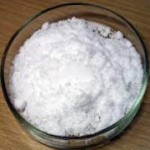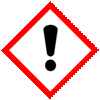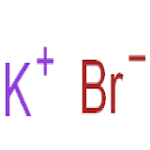CAS Number 7758-02-3, Potassium Bromide USP BP Ph Eur Analytical Reagent Grade Manufacturers Exporters







CAS Number 7758-02-3, Potassium Bromide Manufacturer Exporter
For Properties Specifications of Potassium Bromide Click Properties, Specifications of Potassium Bromide Manufacturer.
For Uses of Potassium Bromide Click Uses of Potassium Bromide Manufacturer.
For For SDS MSDS Sheet of Potassium Bromide Click SDS Safety Data Sheet MSDS Sheet of Potassium Bromide Manufacturer.
The Properties and Specifications of Potassium Bromide:
Potassium Bromide USP Grade Specifications
KBr -- 119.0
Potassium Bromide contains not less than 98.0 percent and not more than 100.5 percent of KBr, calculated on the dried basis. It contains no added substances.
Appearance of solution: clear and colorless.
Test solution: Dissolve 10.0 g in carbon dioxide-free water, and dilute with the same solvent to 100 mL.
Identification:
A: A solution containing 4.5 mg of potassium bromide responds to the test for Bromide.
B: Responds to the test for Potassium.
Acidity or alkalinity: To 10 mL of the solution prepared for the test for Appearance of solution, add 0.1 mL of bromothymol blue TS: not more than 0.5 mL of 0.01 N hydrochloric acid or 0.01 N sodium hydroxide is required to change the color of this solution.
Loss on drying: Dry it at 100 to 105 for 3 hours: it loses not more than 1.0% of its weight.
Bromates:
Starch–mercuric iodide solution: Triturate 1.0 g of soluble starch with 5 mL of water and pour the mixture into 100 mL of boiling water, containing 10 mg of mercuric iodide.
Procedure: To 10 mL of the solution prepared for the test for Appearance of solution add 1 mL of Starch–mercuric iodide solution, 0.1 mL of a 100 g per L solution of potassium iodide, and 0.25 mL of 0.5 M sulfuric acid. Allow to stand protected from light for 5 minutes: no blue or violet color develops.
Limit of chlorine: not more than 0.6%.
Iodides: To 5 mL of the solution prepared for the test for Appearance of solution add 0.15 mL of a 10.5 g per 100 mL ferric chloride solution, and 2 mL of dichloromethane. Shake, and allow to separate. The lower layer is colorless.
Sulfates: A 2.0-g portion shows no more sulfate than corresponds to 0.2 mL of 0.020 N sulfuric acid (0.01%).
Limit of iron: not more than 20 ppm.
Magnesium and alkaline-earth metals: (0.02%, calculated as Ca).
Heavy metals: not more than 10 ppm.
Potassium Bromide BP Ph Eur Grade Specifications
DEFINITION
Content: 98.0 per cent to 100.5 per cent (dried substance).
CHARACTERS
Appearance: White or almost white, crystalline powder or colourless crystals.
Solubility: Freely soluble in water and in glycerol, slightly soluble in alcohol.
IDENTIFICATION
A. It gives reaction of bromides.
B. Solution S (see Tests) gives the reactions of potassium.
TESTS
Solution S: Dissolve 10.0 g in carbon dioxide-free water R prepared from distilled water R and dilute to 100 ml with the same solvent.
Appearance of solution: Solution S is clear and colourless.
Acidity or alkalinity: To 10 ml of solution S add 0.1 ml of bromothymol blue solution R1. Not more than 0.5 ml of 0.01 M hydrochloric acid or 0.01 M sodium hydroxide is required to change the colour of the indicator.
Bromates: To 10 ml of solution S add 1 ml of starch solution R, 0.1 ml of a 100 g/l solution of potassium iodide and 0.25 ml of 0.5 M sulphuric acid and allow to stand protected from light for 5 min. No blue or violet colour develops.
Chlorides: Maximum 0.6 per cent.
Iodides: To 5 ml of solution S add 0.15 ml of ferric chloride solution and 2 ml of methylene chloride.
Shake and allow to separate. The lower layer is colourless.
Sulphates: Maximum 100 ppm.
Iron: Maximum 20 ppm.
Magnesium and alkaline-earth metals: Maximum 200 ppm, calculated as Ca.
Heavy metals: Maximum 10 ppm.
Loss on drying: Maximum 1.0 per cent, determined on 1.000 g by drying in an oven at 105C for 3h.
Potassium Bromide Analytical Reagent Grade Specifications
Potassium Bromide
KBr
Formula Weight 119.00
CAS Number 7758-02-3
REQUIREMENTS
Assay: 99.0% KBr
pH of a 5% solution: 5.0-8.8 at 25C
MAXIMUM ALLOWABLE
Insoluble matter: 0.005%
Bromate (BrO3): 0.001%
Iodate (IO3): 0.001%
Chloride (Cl): 0.2%
Iodide (I): 0.001%
Nitrogen compounds (as N): 0.005%
Sulfate (SO4): 0.005%
Barium (Ba): 0.002%
Heavy metals (as Pb): 5 ppm
Iron (Fe): 5 ppm
Calcium (Ca): 0.002%
Magnesium (Mg): 0.001%
Sodium (Na): 0.02%.
The Uses of Potassium Bromide:
Potassium bromide is a halide salt most commonly used as an add-on anticonvulsant drug to phenobarbital when the latter is ineffective or not as effective as desired. It also may permit you to decrease the dose level of the phenobarbital. Potassium bromide may also be used initially as the sole anticonvulsant drug. Potassium Bromide is used to manufacture photographic papers and plates. Used as a laboratory agent. Used as a heat stabiliser for nylon. Used as a Sedative. Potassium bromide is an antiepileptic medication used in dogs to treat seizures. Potassium bromide is used as a hypnotic and sedative in cattle, horses, sheep and pigs.
The MSDS-SDS Hazard Statement of Potassium Bromide:
Potassium Bromide SDS Safety Data Sheet
MSDS Sheet, Material Safety Data Sheet 16-Jan-23
1. Product Identification
Product Name & Other Names: Potassium bromide or Bromide salt of potassium.
CAS No.: 7758-02-3
EINECS EC Number: 231-830-3
Molecular Weight: 119.00
Chemical Formula: KBr
Recommended usage: Industrial Manufacturing.
2. Hazards Identification
GHS, Globally Harmonized System Classification in accordance with 29 CFR 1910
Hazard Class and Category Code(s), Regulation (EC) No 1272/2008 (CLP)
Serious eye damage/eye irritation Category 2A, H319
Labeling Regulation GHS & EC 1272/2008 (CLP) & GHS
GHS Label Elements  Irritant |
Signal Words: Warning
Hazards statements:
H319: Causes serious eye irritation.
Precautionary statements:
P264: Wash … thoroughly after handling.
P280: Wear protective gloves/protective clothing/eye protection/face protection.
P305+P351+P338: IF IN EYES: Rinse cautiously with water for several minutes. Remove contact lenses, if present and easy to do. Continue rinsing.
P337+313: If eye irritation persists get medical advice/attention.
3. Composition/Information on Ingredients
Product Name & Other Names: Potassium bromide or Bromide salt of potassium.
CAS No.: 7758-02-3
EINECS EC Number: 231-830-3
4. First Aid Measures
Always seek medical attention after first aid measures are provided.
Inhalation: Remove to fresh air. If not breathing, give artificial respiration. If breathing is difficult, give oxygen. Call a physician.
Ingestion: Induce vomiting immediately as directed by medical personnel. Never give anything by mouth to an unconscious person. Call a physician.
Skin Contact: In case of contact, immediately flush skin with plenty of water for at least 15 minutes. Remove contaminated clothing and shoes. Wash clothing before reuse. Call a physician.
Eye Contact: Wash eyes with plenty of water for at least 15 minutes. Call a physician.
5. Fire Fighting Measures
Fire: It is not considered to be a fire hazard.
Fire Extinguishing Media: Use any means suitable for extinguishing surrounding fire.
Special Information: In the event of a fire, wear full protective clothing and NIOSH-approved self-contained breathing apparatus with full face piece operated in the pressure demand or other positive pressure mode. At high temperatures under fire conditions, it may produce toxic or irritating fumes. Fire-extinguishing work is done from the windward and the suitable fire-extinguishing method according to the surrounding situation is used.
6. Accidental Release Measures
Personal precautions, protective equipment, and emergency procedures: Avoid breathing dust/fumes/gas/mist/vapors/spray. Use individual protective equipment (waterproof boots, suitable protective clothing, safety glasses, etc.). Do not approach facing the wind.
Environmental precautions: Do not let the product enter drains, soil, or water sources.
Methods and materials used for containment Cleanup procedures and Storage: Contain spilled material. Do not let the product enter drains. Use a shovel to put the material into a convenient waste disposal container.
7. Handling and Storage
Precautions for safe handling: Apply according to good manufacturing and industrial hygiene practices. Ensure proper ventilation. In case of insufficient ventilation, wear suitable respiratory equipment. Wash thoroughly after handling. Do not drink, eat, or smoke while handling. Avoid contact with skin, eyes, and clothing. Minimize dust generation. Avoid breathing dust/fumes/gas/mist/vapors/spray. Keep container tightly closed. Avoid ingestion and inhalation. Use individual protective equipment (waterproof boots, suitable protective clothing, safety glasses, etc.).
Conditions for safe storage, including any incompatibilities: Store in cool, dry, and ventilated area away from heat sources and protected from sunlight in tightly closed original container. Keep air contact to a minimum. Store protected from heat, sparks and ignition sources and incompatible materials. Avoid contact with skin and eyes. Avoid inhalation of dust/mist/vapor. Do not store with incompatible materials like strong oxidizing agents and acids.
8. Exposure Controls/Personal Protection
Airborne Exposure Limits: None established.
Ventilation System: A system of local and/or general exhaust is recommended to keep employee exposures as low as possible.
Personal Respirators (NIOSH Approved): For conditions of use where exposure to dust or mist is apparent and engineering controls are not feasible, a particulate respirator (NIOSH type N95 or better filters) may be worn.
Skin Protection: Wear protective gloves and clean body-covering clothing.
Eye Protection: Use chemical safety goggles. Maintain eye wash fountain and quick-drench facilities in work area.
Other Control Measures: Maintain good housekeeping in work area. Handle in accordance with good industrial hygiene and safety practice.
9. Physical and Chemical Properties
Appearance: White crystals.
Odor: It is odorless.
Odor threshold: Not available.
pH: Aqueous solution is neutral.
Relative density: around 2.75
Boiling Point: 1435C (2615F).
Melting Point: 730C (1346F).
Flash point: Not available.
Auto-ignition temperature: Not available.
Decomposition temperature: Not available.
Upper/lower flammability or explosive limits: Not available.
Vapor pressure: Not available.
Vapor density: Not available.
Evaporation rate: Not available.
Flammability (solid, gas): Not available.
Partition coefficient: n-octanol/water: Not available.
Solubility: 70g/100g water @ 25C (77F).
Viscosity: Not available.
10. Stability and Reactivity
Stability: Stable under ordinary conditions of use and storage.
Hazardous Decomposition Products: Oxides of the contained metal and halogen, possibly also free, or ionic halogen.
Hazardous Polymerization: Will not occur.
Incompatibilities: Strong oxidizers, acids, and bromine trifluoride.
Conditions to Avoid: Incompatibles.
11. Toxicological Information
LD50 Oral - Rat - male and female - > 2.000 mg/kg
Carcinogenicity: No component of this product present at levels greater than or equal to 0.1% is identified as possible or confirmed human carcinogen by IARC, ACGIH, OSHA and NTP.
Mutagenic Effects: Investigated as a mutagen.
Developmental Toxicity: Not available.
Reproductive Effects: No information available.
12. Ecological Information
Toxicity to fish: LC50 - Pimephales promelas (fathead minnow) - > 30 mg/l - 96 h
Toxicity to daphnia and other aquatic invertebrates: Immobilization EC50 - Daphnia magna (Water flea) - > 100 mg/l - 48 h
Results of PBT and vPvB assessment: This substance/mixture contains no components considered to be either persistent, bioaccumulative and toxic (PBT), or very persistent and very bioaccumulative (vPvB) at levels of 0.1% or higher.
13. Disposal Considerations
Whatever cannot be saved for recovery or recycling should be managed in an appropriate and approved waste disposal facility.
14. Transport Information
DOT USA, TDG Canada & ADR/RID Europe: Not controlled.
IMDG/IMO: Not controlled.
IATA/ICAO: Not controlled.
15. Regulatory Information
USA:
SARA Codes: See section 2.
Section 313: No chemicals are reportable under Section 313.
16. Other Information
DISCLAIMER: The information and recommendations set forth herein are presented in good faith and believed correct as of the date hereof. It is compiled from various sources and it is not necessarily all inclusive nor fully adequate in every circumstance. In addition, these suggestions should not be confused with nor followed in violation of applicable laws, regulations, rules or insurance requirements applicable. This MSDS sheet is intended only as a guide to the appropriate precautionary handling of the material by a properly trained person using this product. Individuals receiving the information must exercise their independent judgment in determining its appropriateness for a particular purpose.
Anmol Chemicals & Pharmaceuticals Pvt. Ltd. is an off-shoot of Anmol Chemicals Taloja. It is located in MIDC Taloja and it is manufacturing pharmaceutical grades of API, Excepients, Food grade and Reagent grade chemicals. Anmol Chemicals & Pharmaceuticals Pvt. Ltd. is a several decades old group of companies, engaged in manufacturing, supplying, distributing, wholesale supplies for actual users, retail or small pack supplies for research and development chemicals, fine and speciality chemicals, pharmaceutical excipients, mineral fortifiers in chemically pure, Analytical reagent grade, IP BP USP Ph Eur EP JP and other pharmaceutical grade monograph including FCC Food grade chemicals and Nutraceuticals, Mineral Fortifiers at best prices.

Potassium Bromide Structure
CAS Number 7758-02-3, Potassium Bromide Manufacturer Exporter
ANMOL CHEMICALS & PHARMACEUTICALS Pvt. Ltd.
India, USA, Europe, UAE
TELEPHONE: +912223770100
Navi Mumbai, INDIA
e-mail: info(At the rate i.e. @)anmol.org
Copyright. 23-nov-24
We manufacture:

